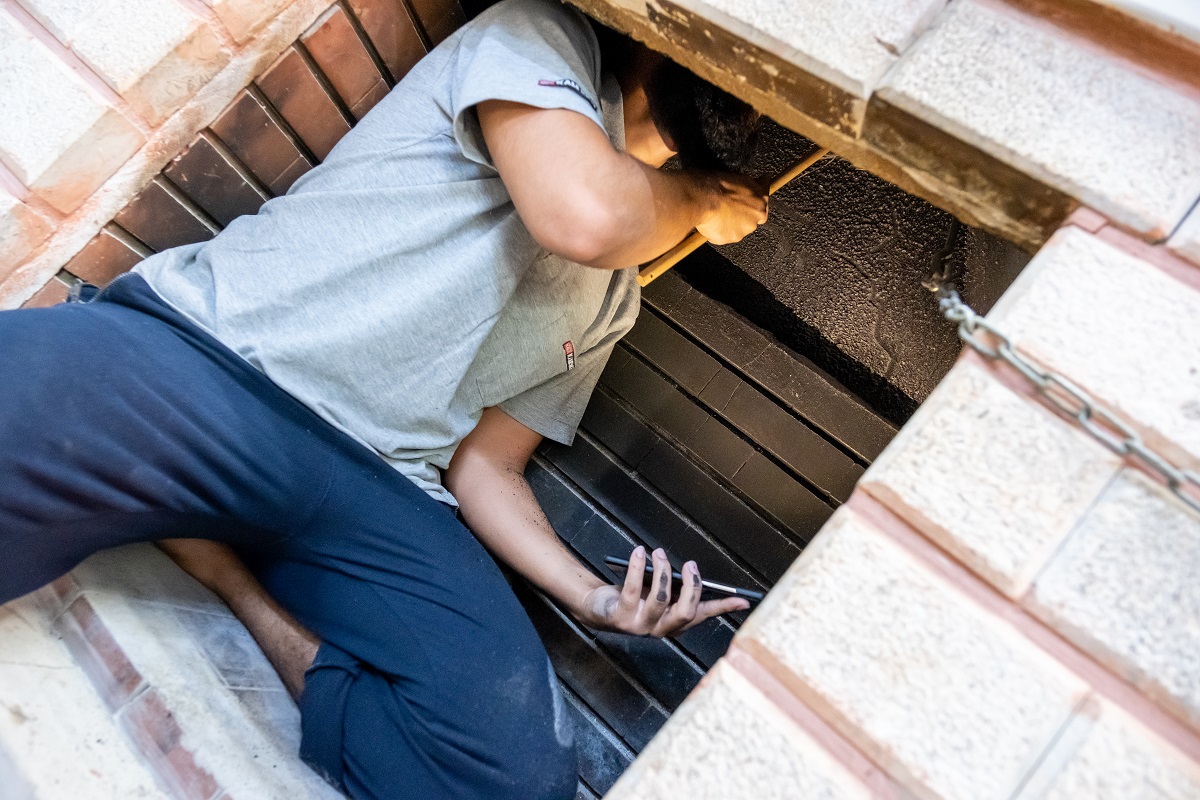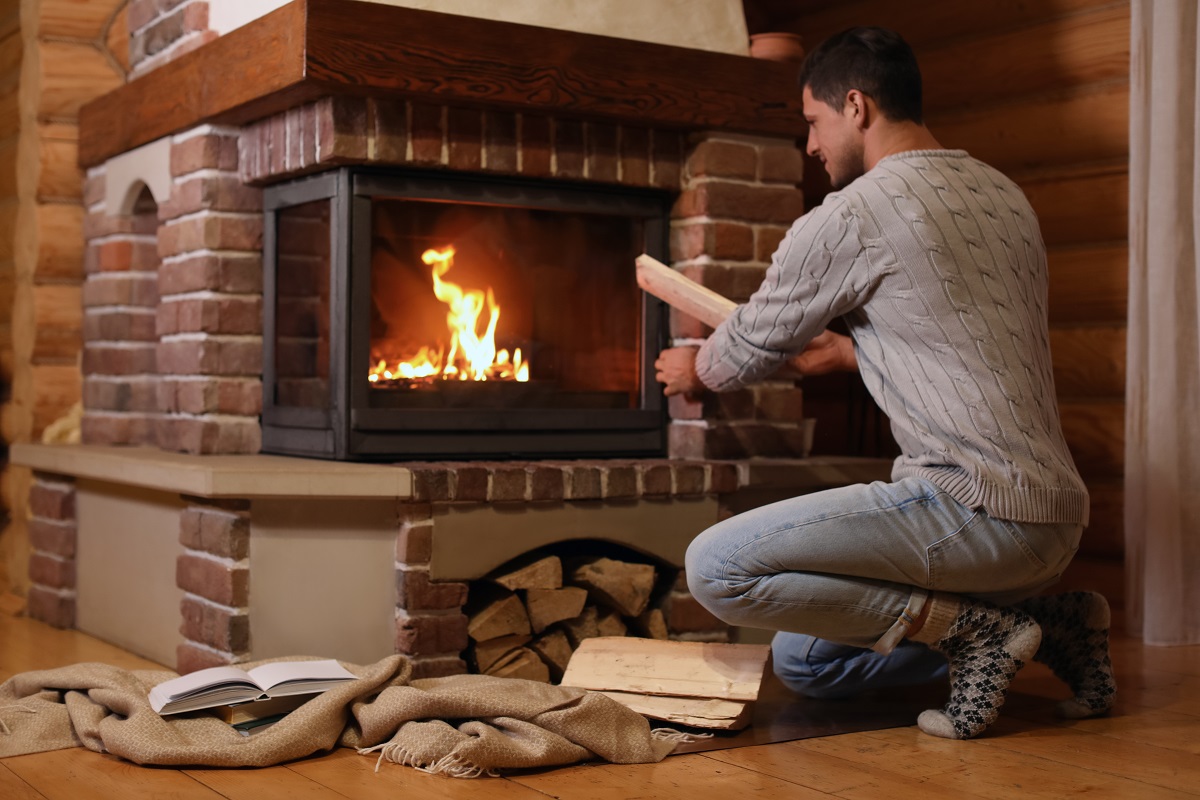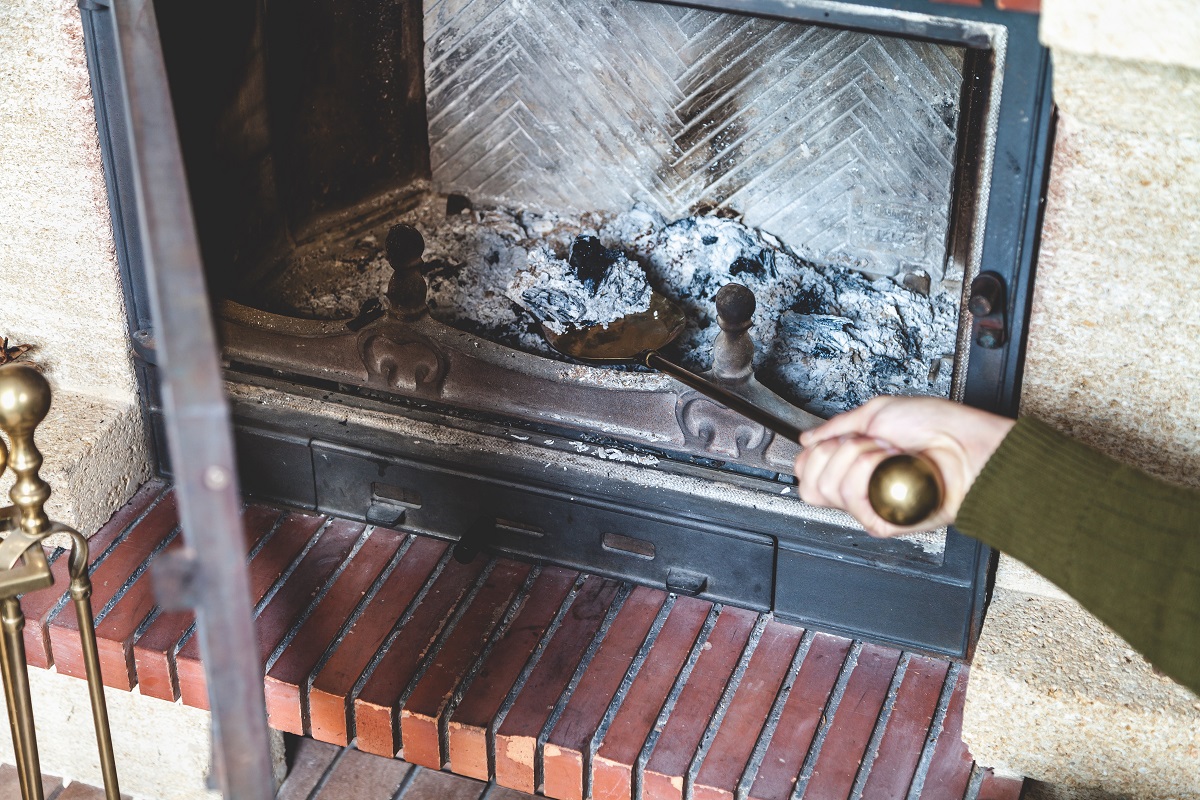According to the National Fire Protection Association, heating equipment is a leading cause of fires in U.S. homes. Between 2016 and 2020, fire departments responded to an estimated 44,210 home fires caused by heating equipment annually. Almost one-fifth of all home fire fatalities came from home heating fires, and almost a quarter of all property damage from home heating fires came from chimney fires. That’s because chimney fires can reach remarkably high temperatures, up to 2,000°F!
On the other hand, some chimney fires can do incredible damage quickly, cracking the chimney’s tile liner and sending fire into the main areas of a home.
Fortunately, there are some simple steps you can take to prevent a chimney fire from happening in the first place.
A dirty chimney is a dangerous chimney
A dirty chimney will often have buildup of creosote, a natural byproduct of wood. This is a mixture of smoke, water vapor, wood particles, tar, and other elements, which are highly flammable. The more you use your fireplace, the more creosote will build up, and the higher the chance of a home fire will be. Many times, chimney fires start when creosote buildup or a blockage ignites in the flue.

One of the easiest ways to prevent a chimney fire is to get your chimney cleaned at least once a year, usually in September or October, before fireplace season begins. A certified chimney sweep (think Bert from Mary Poppins) should thoroughly clean and inspect your chimney, getting rid of the creosote and debris. A professional sweep should also inspect your chimney for damage, such as cracked damaged brick and mortar, which can increase your home’s risk of a fire.
Keep your chimney in good condition
A good-working fireplace is a safe(r) fireplace. In between cleanings, a fireplace should be maintained by completing these simple steps:
- Check the firebox for cracks or loose joints.
- Open the damper completely. It should move freely and sit snug against the throat. Make sure the metal is solid with no cracks, pitting, or rusted areas. If your damper is not in good shape, hire a professional to inspect and replace it.
- Look for any visible signs of damage in the flue using a high-powered flashlight. Metal flue liners should look clean with joints well aligned. Tile or masonry flue liners should be solid and free of cracks.
- Make sure the chimney is free of any leaves or debris.
If you notice any of these issues, call a professional to fix the issue.
Also, consider having a chimney cap installed. When placed around the outside of flue opening (at the top of your chimney), this device can help to keep squirrels, birds, and their nesting materials (as well as other debris) out of your chimney. It will also prevent smoke from re-entering the chimney and creating issues inside your home. Hire a professional for installation as DIY can both be dangerous for the homeowner and void the cap’s warranty.
Burn smartly

Preventing a chimney fire starts by using your fireplace safely.
What to use in your fireplace
Research the type of fireplace you have and use appropriate materials. In wood fireplaces, use dry, seasoned wood. Not only is the material cleaner for the environment, but it also creates less soot and creosote buildup. If you can use artificial logs, make sure they are a Chimney Safety Institute of America accepted product. Use according to the manufacturer's instructions.
How to start your fireplace
Use only newspaper and kindling wood or fire starters to start a fire. Never use flammable liquids, such as lighter fluid, kerosene, or gasoline. These substances produce invisible vapors that can easily catch fire and create conflagration (a large fire that can destroy your home).
Keep your fire manageable
Never burn more than one log at a time, and always keep the fire at a manageable level. Never include any items or substances not meant to burn. Before starting the fire, check around the fireplace and remove flammable items.
Give your fire and chimney some fresh air
Provide your fire with enough air, which will help produce a draft and keep the fire burning at higher temperatures. This, in turn, will cause the fire to produce less creosote and lower the risk of chimney fire.
To do this, open the damper when your fireplace is in use. The damper is a plate or valve that controls airflow in your chimney. You can adjust it once the fire is burning to allow smoke to escape and heat to stay in. Always keep the damper or flue open until the fire is out, so it draws all the smoke out of your house. Do not close the damper until the embers have completely stopped burning. When not using the fireplace, keep the damper completely closed.
Also, when using your fireplace, consider cracking open a window near the fireplace, and always follow the manufacturer’s instructions.
Extinguish your fire safely

When extinguishing your fire, use the fireplace poker to spread out the wood and embers. Using the fireplace shovel, place the ash from the bottom of the fireplace onto the embers and log. Then sprinkle the embers and wood with baking soda to extinguish the remaining embers. Allow ashes to cool for at least three hours, though they may require significantly more time.
Place ashes in a tightly covered metal container. Douse and saturate the ashes with water and keep the container at least 10 feet away from the home and any other nearby buildings.
Quick tips to keep in mind
Some chimney fires are the result of improper use. Help to keep your house safe by following these safety precautions:
- Never use your fireplace as a furnace. They are built for short-term fires, typically no longer than five hours.
- Never leave a lit fireplace unattended.
- Keep children and pets away from the outside vents. Create a “kid-free zone” around the fireplace of at least three feet. Glass doors and screens can remain dangerously hot for several hours after the fire goes out.
- Equip your home with the necessary safety equipment – a fire extinguisher, carbon monoxide alarm, and smoke alarms – and keep them in good working order.
If you have a wood stove…
Your home is also at risk of a chimney fire. If one does occur, the connector pipes from the wood stove to the chimney can become damaged and may allow the fire to enter your home. Take the above necessary precautions when using a woodstove, so you may enjoy the heat without the danger.
Beware of carbon monoxide
A chimney’s job is to remove smoke and other harmful gasses, such as carbon monoxide (CO), from your home. The process of burning wood can create CO, an odorless, tasteless and potentially deadly gas that can easily find its way into your home through the cracks of a damaged liner or if your chimney is clogged. More than 50,000 people visit the emergency room each year due to CO poisoning, so make sure you have working carbon monoxide detectors where they need to be in your home.
Also, as previously mentioned, get your chimney cleaned and inspected at least once a year to identify damage to your chimney and prevent dangerous situations.
Get more home safety tips in the FMI HomeAssist app!

Your home is your most valuable asset. Now there’s an app for it. FMI HomeAssist, powered by vipHomeLink is a free app and service, exclusively for FMI policyholders. It allows you to organize, maintain and improve your home all from one easy-to-use, intuitive app.
From personalized maintenance reminders, to keeping all your documents and info in one secure location, HomeAssist is your go-to resource for protecting your home and preventing costly claims. It’s one more way FMI goes the extra mile to help keep you and your loved ones safe.
Claim your personalized FMI HomeAssist app and help protect your home!
FMI content is powered by vipHomeLink